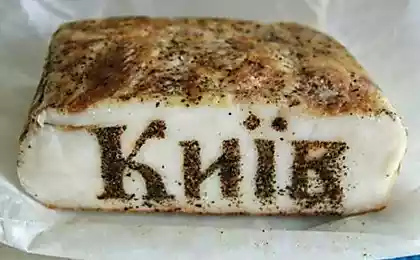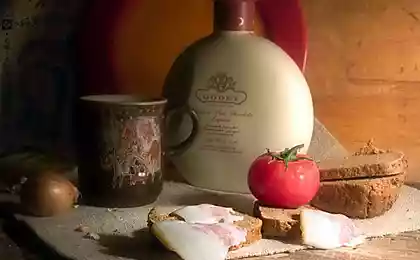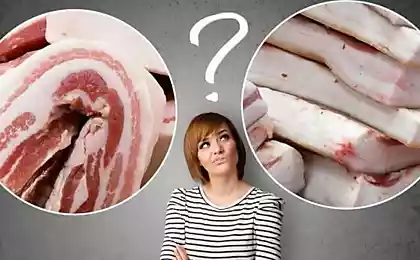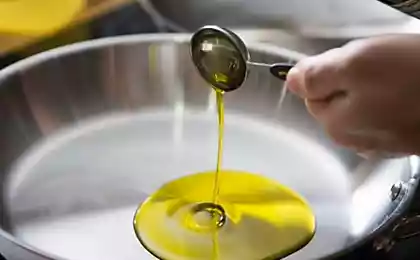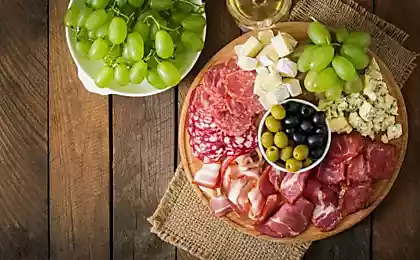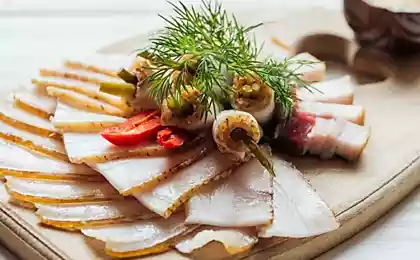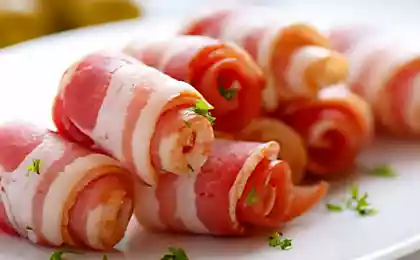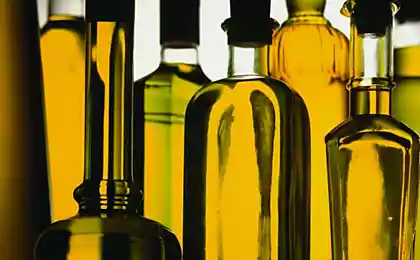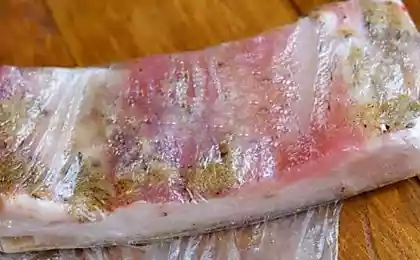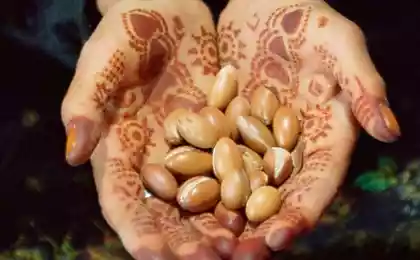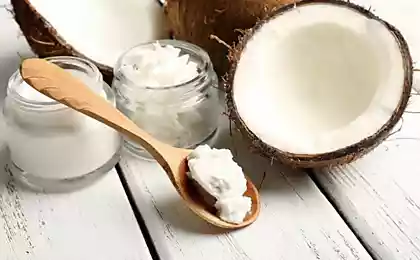607
What kind of oil is that and how to fry?
How often do you have enough time to think about the little things? For example, oil, which is fried food – it's such a small thing, really more to think about? Importantly, the oil was without taste, without smell, without cholesterol and cheaper – I'm sure many think so. And buying oil is refined, deodorized, that is, without any reverence extracted (note – I do not write “squeezed” because it is not so) the oil that was purified from chemical impurities, and rather unflattering, way.
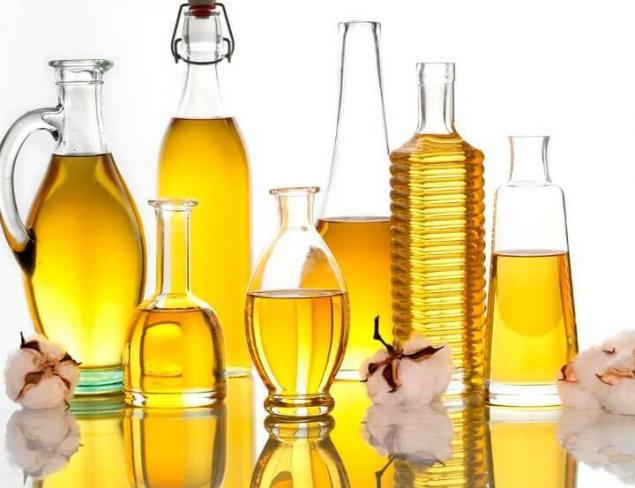
Meanwhile, the choice of oil is a critical moment, and from the point of view of both culinary and medical. The choice of cooking oil is actually not limited to corn and sunflower:let's see, what kind of oil is best to fry based on the experience and knowledge about the chemical composition of various oils.
So, if we talk about the different oil from a culinary point of view, we are concerned about several specific things:
Butter butter is about 80% fat, with the rest being various impurities, such as milk protein and water. It is rich in vitamin a, but saturated fats, which account for about 50% of the total oil.
When heated butter in it quite quickly start to burn those impurities, and the oil begins to darken and emit a nutty aroma. Fry butter is very convenient if you want to quickly get a ruddy crust, and if you do not overheat butter, roasted in the products acquire a pleasant taste.
However, let us not forget that everything said above refers to real butter: unfortunately, some manufacturers add vegetable oils of poor quality that is immediately evident when you dissolve a piece of the oil in the pan.
When frying in butter:
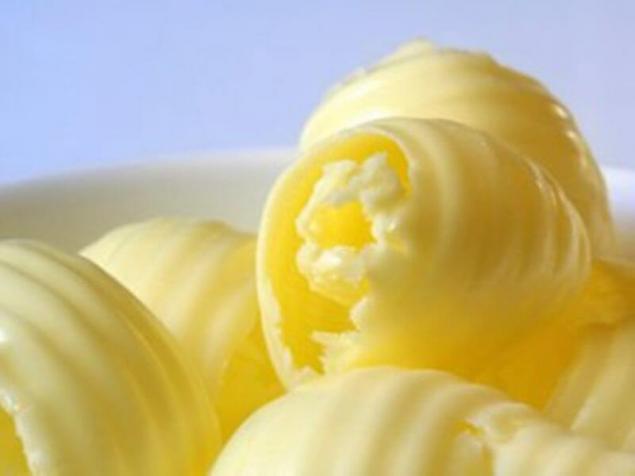
Clarified butter Clarified butter, or ghee – same butter, just cleaned of impurities. This oil can be stored long enough and is widely used in Indian cuisine and other cuisines of Southeast Asia and in traditional medicine.
Like regular butter, ghee contains a large amount of saturated fats, but unlike his relative has a high point of dymlenija to about 250 degrees, which allows you to use it for deep frying. In General, keep in the fridge a small jar of ghee to it periodically to roast, it may be a good idea – it is, like butter, works great for roasting or stewing of vegetables, but won't burn if you accidentally overheat the pan.
When frying in clarified butter (ghee):
Purification and deodorization of oil is also not mechanical but a chemical process, so that the total of the oil that is pressed from the seed and that which is on the shelf of the supermarket, not so much. Overall, this oil can be used for any frying, but if possible, I would advise not to get involved.
When frying in refined oil:
It includes olive oil, which was cleaned mechanically to remove impurities, allowing it to be used for cooking, pomace oil, that is oil that is extracted by chemical means from bagasse after over mechanical squeeze oil Extra Virgin. We have this oil is not in great demand, as it is significantly more expensive than refined corn or sunflower, but it surpasses them in terms of taste and less injurious to health.
When frying with olive oil:
Extra Virgin olive oil
It is generally believed that deep-fry Extra Virgin you can not – he has a low point dymlenija powerful enough of its own taste and flavour and, importantly, the high price. However, I sometimes use Extra Virgin olive oil if necessary to fry, and then vegetables and a little heat in order to release the maximum flavour.
When frying in olive oil Extra Virgin:
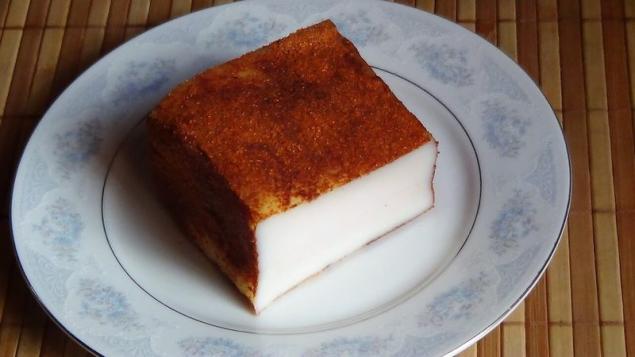
The fat is any animal fat, from lard to which vytaplivaete of fat bacon when it is heated. I think it is no exaggeration to say that urban residents have almost no fry in lard.
The reasons are many – here and high in saturated fat, cholesterol, and various impurities, and a low point of dymlenie and peculiar smell, and a pretty distinct taste that comes through in the taste of the finished dish. However, a number of traditional dishes (such as dishes of the Hungarian cuisine or pilaf) decided to fry it in lard, just because of its taste and how it extracts the flavors from the foods being fried.
When frying in lard:
First, you preserve the flavor and aroma of butter, reducing the amount of saturated fat in half.
Secondly, the less likely it is that this oil will burn: mixing oils will not increase dymlenija point (the temperature at which start to burn contained in the butter proteins, this does not change), but makes the heat more gentle and controllable.
This makes the mixture of oil and butter universal – for example, you can first let it sit in it a mixture of finely chopped vegetables, then increase the fire, or fry these delicate foods like fish when you fry on a medium heat, and readiness determine visually.
When frying a mixture of oil and butter:
P. S. And remember, only by changing their consumption — together we change the world! © Join us at Facebook , Vkontakte, Odnoklassniki
Source: arborio.ru/na-kakom-masle-zharit/

Meanwhile, the choice of oil is a critical moment, and from the point of view of both culinary and medical. The choice of cooking oil is actually not limited to corn and sunflower:let's see, what kind of oil is best to fry based on the experience and knowledge about the chemical composition of various oils.
So, if we talk about the different oil from a culinary point of view, we are concerned about several specific things:
- Point dymlenie, that is, the temperature at which the oil starts to smoke, and its chemical composition is changed under the influence of heat. From refined oils point dymlenija the most high, the olive Extra Virgin is low. Thus, let us not forget that usually – not counting the fried food product to cool the oil to a temperature below the point of dymlenie, so fry and Extra Virgin, just do it wisely, not too over-heating the oil before putting the food.
- Flavors, which reports oil products. The principle of “less is more” applies here not always.
- The ability of the oil to form a Golden crust – not every oil is the same.
- The saturated fat. It saturated fats, which are broken down in the body is not completely, lead to the formation of fatty deposits cause narrowing of arteries. Saturated fats, of course, not fatal, but to control their consumption is highly desirable.
- The content of impurities. Fat content in vegetable oil is 100% or so, and the amount of impurities is minimal, other types of oil to boast of this I can't.
- Point dymlenija. One of the most important aspects, because once the oil starts to smoke, it there are irreversible chemical processes, which lead to the formation of carcinogens.
Butter butter is about 80% fat, with the rest being various impurities, such as milk protein and water. It is rich in vitamin a, but saturated fats, which account for about 50% of the total oil.
When heated butter in it quite quickly start to burn those impurities, and the oil begins to darken and emit a nutty aroma. Fry butter is very convenient if you want to quickly get a ruddy crust, and if you do not overheat butter, roasted in the products acquire a pleasant taste.
However, let us not forget that everything said above refers to real butter: unfortunately, some manufacturers add vegetable oils of poor quality that is immediately evident when you dissolve a piece of the oil in the pan.
When frying in butter:
- when you need to get a browned crust;
- when you need to slowly let it sit products in the oil;
- when you need to give the product a pleasant nutty aroma;
- when the temperature of the roast will not be too high.

Clarified butter Clarified butter, or ghee – same butter, just cleaned of impurities. This oil can be stored long enough and is widely used in Indian cuisine and other cuisines of Southeast Asia and in traditional medicine.
Like regular butter, ghee contains a large amount of saturated fats, but unlike his relative has a high point of dymlenija to about 250 degrees, which allows you to use it for deep frying. In General, keep in the fridge a small jar of ghee to it periodically to roast, it may be a good idea – it is, like butter, works great for roasting or stewing of vegetables, but won't burn if you accidentally overheat the pan.
When frying in clarified butter (ghee):
- when you need to get a browned crust;
- when you need to slowly let it sit products in the oil;
- when you need to give the product a pleasant nutty aroma;
- when the temperature of the roasting can be high.
Purification and deodorization of oil is also not mechanical but a chemical process, so that the total of the oil that is pressed from the seed and that which is on the shelf of the supermarket, not so much. Overall, this oil can be used for any frying, but if possible, I would advise not to get involved.
When frying in refined oil:
- when you need to avoid the appearance of foreign tastes;
- when you cook deep-fried or high temperature.
It includes olive oil, which was cleaned mechanically to remove impurities, allowing it to be used for cooking, pomace oil, that is oil that is extracted by chemical means from bagasse after over mechanical squeeze oil Extra Virgin. We have this oil is not in great demand, as it is significantly more expensive than refined corn or sunflower, but it surpasses them in terms of taste and less injurious to health.
When frying with olive oil:
- when you need to slowly let it sit products in the oil;
- when you need to give the product a pleasant aroma of olive oil;
- when the temperature of the roasting can be high.
Extra Virgin olive oil
It is generally believed that deep-fry Extra Virgin you can not – he has a low point dymlenija powerful enough of its own taste and flavour and, importantly, the high price. However, I sometimes use Extra Virgin olive oil if necessary to fry, and then vegetables and a little heat in order to release the maximum flavour.
When frying in olive oil Extra Virgin:
- when you need to slowly let it sit products in the oil;
- when you need to give the product a pleasant aroma of olive oil;
- when the temperature of the roast will not be high.

The fat is any animal fat, from lard to which vytaplivaete of fat bacon when it is heated. I think it is no exaggeration to say that urban residents have almost no fry in lard.
The reasons are many – here and high in saturated fat, cholesterol, and various impurities, and a low point of dymlenie and peculiar smell, and a pretty distinct taste that comes through in the taste of the finished dish. However, a number of traditional dishes (such as dishes of the Hungarian cuisine or pilaf) decided to fry it in lard, just because of its taste and how it extracts the flavors from the foods being fried.
When frying in lard:
- when you need to give the product the aroma of fat;
- when the temperature of the roast will not be high.
First, you preserve the flavor and aroma of butter, reducing the amount of saturated fat in half.
Secondly, the less likely it is that this oil will burn: mixing oils will not increase dymlenija point (the temperature at which start to burn contained in the butter proteins, this does not change), but makes the heat more gentle and controllable.
This makes the mixture of oil and butter universal – for example, you can first let it sit in it a mixture of finely chopped vegetables, then increase the fire, or fry these delicate foods like fish when you fry on a medium heat, and readiness determine visually.
When frying a mixture of oil and butter:
- when you need to get a ruddy crust;
- when you need to slowly let it sit products in the oil;
- when you need to give the product a pleasant nutty aroma;
- when the time of roasting may be delayed;
- when the temperature of roasting may vary in the process.
P. S. And remember, only by changing their consumption — together we change the world! © Join us at Facebook , Vkontakte, Odnoklassniki
Source: arborio.ru/na-kakom-masle-zharit/
